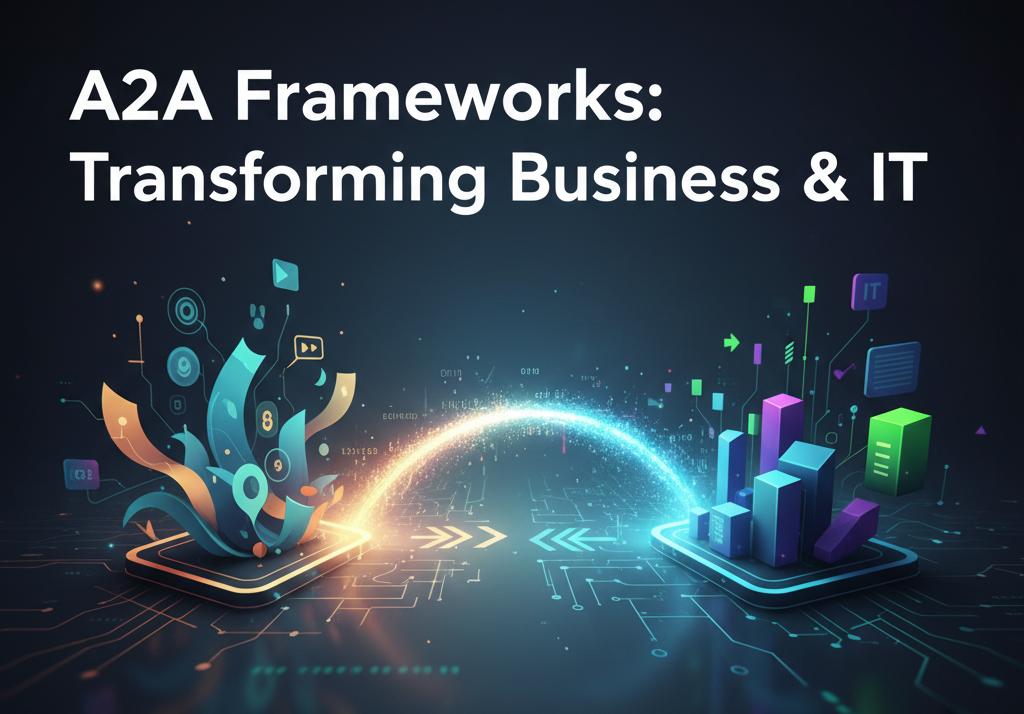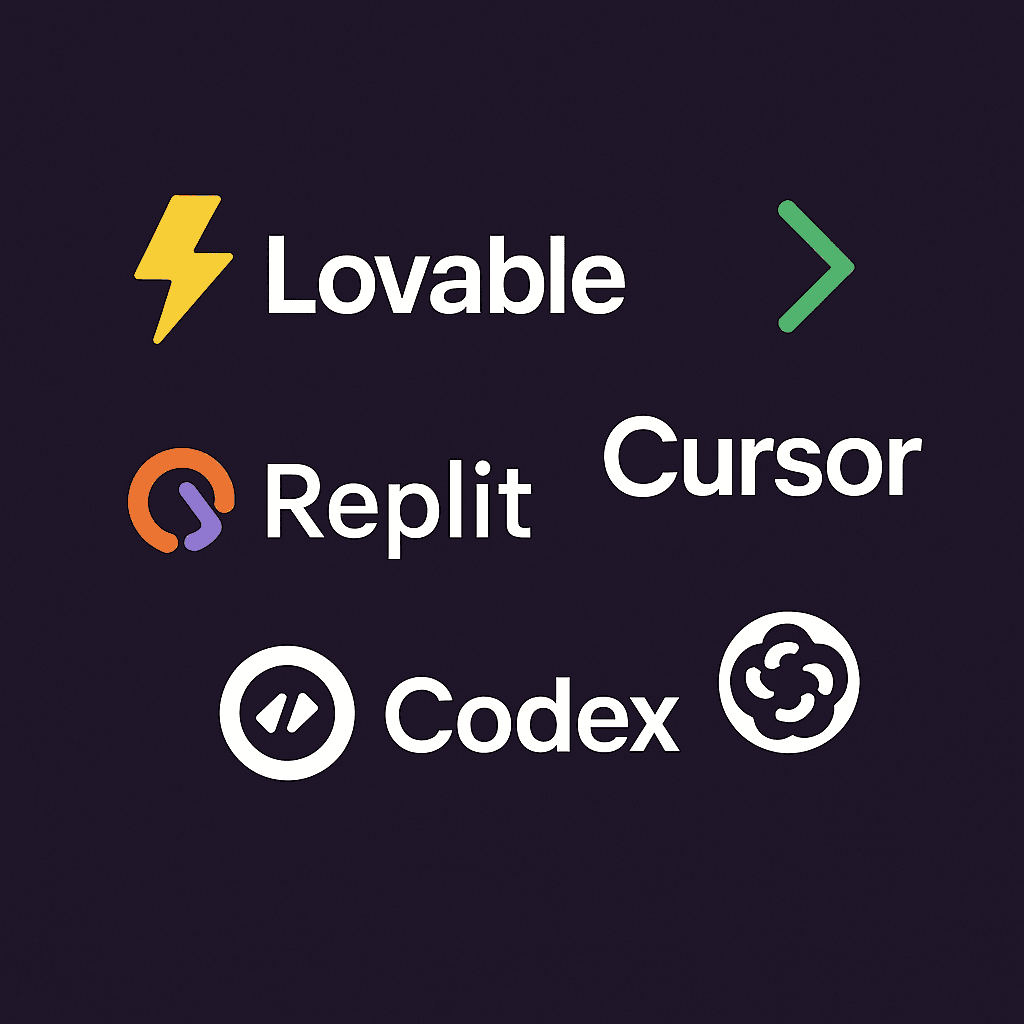A2A Frameworks: Transforming Business and IT
Introduction
The move from centralized automation to Agent-to-Agent collaboration is no longer theoretical — it's an operational imperative. A2A Frameworks are reshaping how businesses coordinate tasks, make decisions, and scale services by enabling autonomous software agents to communicate, negotiate, and act on behalf of teams and systems. For business owners and IT departments, this shift promises faster decision loops, fewer manual handoffs, and the kind of resilience modern operations demand.
This article explains what A2A frameworks are, why the MCP (Multi-Agent Communication Protocol) matters, and how Agent to Agent architectures produce measurable gains across operations, supply chains, healthcare, and finance. You'll get practical examples, implementation considerations, security and interoperability guidance, and an actionable view of the future so you can begin planning pilots that align with your organization's objectives. Throughout, I'll highlight long-tail concepts like A2A supply chain optimization and agent communication protocol best practices to help your IT and business teams assess readiness and next steps.
Understanding A2A Frameworks
At its simplest, an A2A Framework connects autonomous agents — software modules, robotic controllers, or AI assistants — so they can exchange data and coordinate actions without a single central orchestrator. This differs from traditional systems where a central scheduler or workflow engine directs every step. Instead, agents use a shared language and ruleset (often implemented via an MCP) to negotiate responsibilities, share state, and escalate exceptions.
Practical anatomy: an agent typically contains a domain model, policy/utility functions, a communications stack, and connectors to data sources (APIs, edge sensors, databases). The MCP standardizes how messages are structured (intent, payload, provenance, trust assertions) and how agents discover one another. That standardization enables heterogeneous agents — from a legacy ERP connector to a cloud-native prediction engine — to work together in real time.
Example use case: consider an e-commerce fulfillment center. One agent monitors incoming orders and prioritizes urgent shipments; another tracks inventory levels across multiple warehouses; a routing agent negotiates carriers and transit times. When inventory dips, the inventory agent proposes reallocation; the routing agent assesses cost/time tradeoffs and the fulfillment agent confirms new schedules — all via A2A interactions. Smith (2023) documented similar dynamics in supply chain pilot projects where multi-agent coordination reduced fulfillment delays and lowered unnecessary expedited shipping events.
Long-tail terms like multi-agent systems for enterprise and agent discovery and negotiation are core to adoption. A practical insight many teams overlook: treat the MCP as a product — design governance, observability, testing sandboxes, and versioning into it. Doing so prevents fragile point-to-point integrations and empowers IT teams to manage agent lifecycles with the same rigor as microservices.
Image suggestion: Diagram of Agent-to-Agent communication flow (alt: A2A network diagram showing agents, MCP, and decision paths).
Key Benefits of A2A Frameworks
A2A frameworks deliver four practical benefits that matter directly to business owners and IT departments:
- Enhanced Automation: Traditional automation handles linear, repeatable tasks well. A2A excels when tasks are interdependent and require negotiation or contingency handling. For example, in a field service scenario, a diagnostics agent can negotiate with scheduling agents to prioritize appointments based on real-time severity and technician skills. The result: fewer escalations and higher first-time fix rates.
- Improved Efficiency: Agents operate in parallel, which reduces bottlenecks in centralized schedulers. In logistics pilots referenced by Smith (2023), multi-agent coordination enabled dynamic rerouting that reduced average delay minutes by improving local decisions without waiting for batch re-planning.
- Increased Innovation: When agents share knowledge, emergent solutions arise. A finance trading pilot (Jones, 2024) showed that agent ensembles experimenting with different strategies produced portfolios that adapted faster to market regime changes than centrally managed rule sets.
- Greater Resilience: Decentralized decision-making reduces single points of failure. If one agent fails, others can reassign duties or degrade gracefully. However, this requires semantic compatibility and robust discovery — qualities delivered by a well-architected MCP (Brown, 2022).
Unique insight: combine reputation scoring with the MCP so agents can rate the historical accuracy and reliability of peers. This "agent reputation layer" helps mitigate brittle emergent behaviors and provides an audit trail for compliance teams — a capability rarely emphasized in mainstream coverage.
Long-tail keywords to include in RFPs: A2A communication protocol security, decentralized intelligence for enterprise operations.
Applications Across Industries
A2A frameworks are industry-agnostic patterns that map onto domain-specific problems. Below are concrete examples relevant to manufacturing, healthcare, finance, and logistics.
- Manufacturing: On modern shop floors, agents can represent CNC machines, quality inspection cameras, AGVs (automated guided vehicles), and human supervisors. Agents negotiate production schedules dynamically when machine downtimes occur, rerouting work orders to maintain throughput. Case studies from industrial IoT pilots show predictive maintenance agents reducing unplanned downtime by anticipating failure modes and communicating schedule changes to production planners.
- Healthcare: In hospital settings, A2A frameworks can coordinate patient monitoring, lab systems, and bed management. For instance, an ICU monitoring agent can alert a triage agent and a bed allocation agent simultaneously, enabling faster admissions and better utilization of resources. Privacy and compliance (HIPAA, GDPR) are central considerations; agent message payloads must enforce data minimization and consent policies.
- Finance: Agents are used for algorithmic trading, risk scoring, and fraud detection. Multiple detection agents can cross-validate suspicious patterns and escalate only when consensus metrics exceed thresholds, reducing false positives.
- Logistics & Supply Chain: The supply chain is a natural fit — carriers, warehouses, inventory systems, and order managers can each be represented by agents. A2A-driven coordination enables dynamic reallocation of stock and carrier negotiation in response to weather, strikes, or sudden demand changes.
Unique perspective: industries should consider hybrid models where human-in-the-loop agents (operators, controllers) are represented as agents with explicit override and audit capabilities. Framing humans as first-class agents simplifies escalation paths and clarifies accountability in mixed human/AI workflows.
Long-tail terms: A2A supply chain optimization case study, multi-agent systems in healthcare operations.
Challenges and Considerations
Adopting A2A frameworks brings technical and organizational challenges. Recognizing them early lets IT departments and business owners build realistic roadmaps.
- Complexity & engineering maturity: Designing agents, an MCP, and the governance around them is non-trivial. Teams need expertise in distributed systems, protocol design, and AI behavior testing. Start with a bounded pilot that isolates one domain (e.g., warehouse routing).
- Security & trust: When agents act autonomously, the attack surface grows. Secure authentication, message integrity, fine-grained authorization, and runtime attestation are mandatory. Plan for how agents are revoked or quarantined if they become compromised.
- Interoperability & standards: Heterogeneous vendors and legacy systems make interoperability difficult. The MCP should define schema, discovery, QoS expectations, and versioning. Encouragingly, open standards and SDKs are emerging; evaluate vendors against agent communication protocol best practices.
- Observability & governance: Decentralized actions require centralized visibility for audits and debugging. Implement event-tracing, distributed logging, and an agent registry that records contracts, capabilities, and SLAs. Add guardrails like transactional sagas or human approval gates for high-risk actions.
- Ethical & compliance considerations: Autonomous agents making allocation or triage decisions can create biases or unfair outcomes. Build policy agents that enforce constraints (fairness, legal compliance) and include human review loops where required.
Unique insight: prioritize an MCP test harness that simulates malicious or flaky agents during pre-production testing. This "adversarial agent testing" uncovers brittle integrations earlier and reduces costly failures in production.
Long-tail terms: A2A security best practices, agent interoperability standards.
The Future of A2A Frameworks
As AI models and edge computing mature, A2A frameworks will become more capable and easier to adopt. Tooling will evolve to include managed MCP layers, low-code agent composition tools, and standardized registries so enterprises can onboard agents like microservices.
Expect marketplaces of certified agents: finance, logistics, and healthcare domains will see third-party agents offering specialized capabilities (fraud scoring, demand forecasting, regulatory compliance). Enterprises will cherry-pick agents and orchestrate them through their MCP while retaining governance controls.
Research directions that matter: techniques for safe multi-agent learning, robust agent discovery with decentralized identity (DID), and privacy-preserving message protocols. Industry adoption will hinge on tangible ROI — firms that document cost reductions, increased throughput, or improved SLA compliance will catalyze broader investment.
Unique take: treat A2A adoption as a product development problem, not purely a systems integration effort. Productize your MCP and agent catalog: offer clear SLAs, versioning, SDKs, and developer experience so internal teams can iterate quickly.
Long-tail phrases to monitor: enterprise agent marketplaces, A2A protocol governance.
Quick Takeaways
- A2A Frameworks enable decentralized, autonomous collaboration that reduces manual handoffs and speeds decision-making.
- The MCP (Multi-Agent Communication Protocol) is the backbone — design it as a product with governance, versioning, and observability.
- Real-world wins appear in logistics, manufacturing, healthcare, and finance via better responsiveness and reduced costs.
- Security, interoperability, and ethical controls are mandatory — build adversarial tests and agent revocation paths early.
- Start small with bounded pilots, then scale using an agent registry and marketplace approach.
- Unique levers: agent reputation layers and human-as-agent models improve accountability and performance.
- Treat A2A adoption as product development to accelerate internal integration and ROI.
Conclusion
A2A Frameworks are not a niche research topic — they're a practical architecture for organizations that need agility, resilience, and scalable automation. For business owners, the appeal is straightforward: faster outcomes, reduced operational friction, and new sources of value from agent collaboration. For IT departments, A2A frameworks offer a way to decompose brittle monoliths into composable agents governed by a robust MCP and supported by observability and security controls.
Moving from theory to practice requires disciplined pilots, clear metrics, and cross-functional governance. Begin with use cases that have high variance and interdependencies — inventory reallocation, field service scheduling, or fraud adjudication — where A2A shines. Invest in an MCP that supports discoverability, secure messaging, and versioned contracts, and adopt practices like adversarial agent testing and reputation scoring to manage risk.
If you're a business owner or IT leader ready to explore A2A, start by identifying one process to pilot, assemble a cross-functional team, and measure both operational and business outcomes. The organizations that embrace Agent to Agent collaboration today will have a competitive edge in responsiveness and innovation tomorrow.
FAQs
Q1: What is an A2A framework and how does it differ from traditional automation? A1: An A2A framework connects autonomous agents so they negotiate and coordinate without a central orchestrator. Unlike rule-based automation, A2A supports decentralized decision-making and real-time negotiation — a key in complex, interdependent workflows.
Q2: What role does the MCP play in Agent to Agent systems? A2: The MCP (Multi-Agent Communication Protocol) standardizes message formats, discovery, and trust assertions so heterogeneous agents can interoperate reliably. It's the foundation for secure agent discovery, versioning, and governance.
Q3: Which industries benefit most from A2A frameworks? A3: Manufacturing, logistics/supply chain, healthcare, and finance are early beneficiaries because they have many interdependent actors and high variability.
Q4: What security measures are essential for deploying A2A frameworks? A4: Essential measures include mutual authentication (mTLS), cryptographic message signing, role-based authorization, runtime attestation, and an agent revocation mechanism.
Q5: How should my organization start an A2A initiative? A5: Start with a bounded pilot in a high-value area, define KPIs (latency, cost, SLA compliance), build an MCP test harness, and include governance and human-in-the-loop checkpoints. Use an incremental rollout and measure ROI before scaling.
Engagement & Share Request
Thanks for reading — I'd love to hear your take. Which business process in your organization would benefit most from Agent-to-Agent coordination? Share this article with a colleague in IT or operations who's exploring automation. If you tried any A2A experiments, what surprised you most? Please comment, share on LinkedIn, or tag someone who should see this.
References
- Smith, J. (2023). The Impact of A2A Frameworks on Supply Chain Optimization. Journal of Business Logistics. (Referenced for supply chain pilot outcomes.)
- Jones, A. (2024). A2A Frameworks and the Future of Innovation. Harvard Business Review. (Referenced for finance and innovation examples.)
- Brown, L. (2022). Multi-Agent Communication Protocols: A Comprehensive Guide. IEEE Transactions on Autonomous Systems. (Referenced for MCP design and security considerations.)
- Additional reading: industry reports on AI adoption and distributed systems (Gartner, McKinsey) for broader context on enterprise AI ROI and governance.




